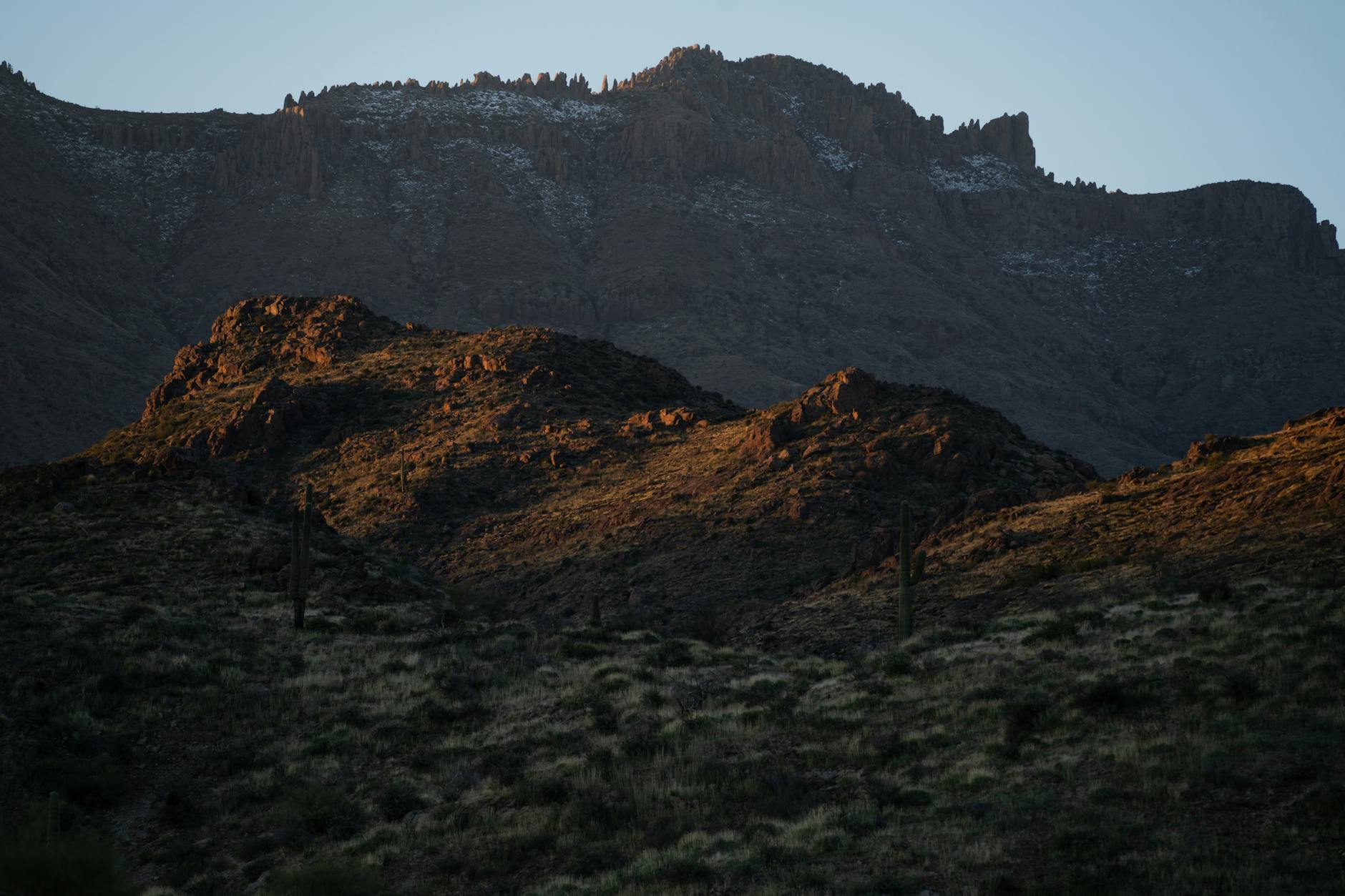Can Sustainable Tourism Make a Difference in Australia?

Exploring Sustainable Tourism
Key Concepts of Eco-Friendly Travel
Sustainable tourism is a journey that transcends just exploring new destinations and is about making conscious choices that protect the earth and enrich local communities. In my adventures, I've found that incorporating eco-friendly travel principles can significantly transform your travel experience. For instance, opting for eco-friendly accommodations or prioritising public transportation can considerably reduce your carbon footprint.
Exploring places like the Royal Botanic Gardens Melbourne inspires a deep appreciation for sustainable practices. The gardens not only showcase Australia's unique flora but also represent efforts in conserving biodiversity and promoting eco-awareness. While planning South America tours, embracing practices like responsible wildlife interaction and supporting local artisans enriches your journey and contributes to preserving cultural heritage.
Impact on Local Communities
Engaging in sustainable travel practices ensures that tourism contributes positively to local communities. When considering Cuba travel, for instance, immersing in local customs and participating in community-based projects fosters genuine cultural exchanges and economic growth. This approach supports local businesses and ensures that your travel funds are directly benefiting those who call these places home.
Environmental Benefits
The environmental benefits of sustainable tourism are multifaceted, from reducing waste and pollution to preserving natural habitats. Tours such as Machu Picchu tours are great examples of how tourism can coexist with nature when done responsibly. Guided by strict conservation protocols, these tours allow us to explore historical marvels while protecting the surrounding ecosystems for future generations. Sustainable travel thus not only ensures that we leave a smaller footprint but also safeguards the beauty and integrity of the places we cherish.
Australia's Unique Ecosystems
Diverse Wildlife Habitats
Australia's unique ecosystems are a sanctuary for remarkable biodiversity, playing a crucial role in sustaining diverse wildlife habitats. Places like the Healesville Sanctuary illustrate how we can support wildlife conservation through active involvement. These efforts showcase our commitment to maintaining the balance between tourism and natural preservation. The unique flora and fauna found within Australia’s borders are not only captivating but also vital to comprehending global biodiversity dynamics.
As eco-conscious individuals, we have numerous opportunities to engage with environmentally responsible travel options. Sustainable endeavours such as arctic cruises provide insight into preservation efforts. These cruises emphasize minimal environmental impact, aiming to protect delicate ecosystems while educating participants about the adverse effects of climate alterations.
Similarly, Cuba tours reveal how communities thrive in harmony with their surroundings. They focus on fostering ecotourism without compromising natural beauty or biodiversity. These tours allow participants to learn about local ecosystems and their significance.
The diversity in Australia's wildlife habitats requires ongoing support and involvement. It is essential for travellers and conservationists to collaborate, ensuring the preservation of these irreplaceable landscapes. Every eco-friendly initiative, as seen with Melbourne Zoo, plays a part in safeguarding our natural world and inspires us to adopt sustainable practices. Collaborations and initiatives like these are instrumental in nurturing a balance between exploration and conservation.
Implementing Sustainable Practices
Eco-Certification for Operators
Eco-certification is a crucial step in bridging sustainability with tourism. These certifications ensure that operators adhere to environmentally responsible practices. They not only recognise the efforts of eco-friendly businesses but also motivate others to adopt greener policies. In Melbourne, the Royal Botanic Gardens sets an example with their energy-efficient operations, offering a model for other organisations to follow. Central america travel is also turning towards eco-certification, ensuring tourism does not compromise natural beauty.
Community-Based Initiatives
Community involvement is vital for achieving sustainable tourism. Initiatives that empower locals to lead and benefit from eco-tourism have been successful in many regions. These initiatives can range from local tour guides sharing indigenous knowledge to community-owned eco-lodges that provide jobs and income while preserving the environment. Programs that support community resilience can be transformative, ensuring tourism benefits local economies without exploiting resources.
Renewable Resources in Tourism
The use of renewable resources in tourism is gaining traction as operators realise the long-term benefits of sustainable infrastructures. These resources, such as solar energy and rainwater harvesting, lower operational costs and minimise environmental impact. Melbourne Zoo exemplifies this approach by incorporating renewable energy systems that reduce their carbon footprint and promote conservation through educational programs. Similarly, central america tours are integrating renewables to promote a cleaner, more sustainable travel experience.
Measuring Impact and Success
Metrics for Sustainability
Understanding how to quantitatively measure the sustainability of a travel venture can make all the difference. Tracking specific metrics like carbon offset levels, waste reduction percentages, and water usage offers tangible evidence of environmental impact reduction. These metrics form the backbone of analyzing and improving sustainable tourism practices, ensuring we maintain the balance between adventure and conservation.
Case Studies from Australia
Looking closer to home, Australia has numerous examples that highlight the effective adoption of sustainable tourism models. Take the Royal Botanic Gardens Melbourne as an example; it's a haven of biodiversity that serves as a model for sustainability in urban spaces. This outstanding effort didn't happen overnight but came from focused strategies like integrating local flora conservation and minimising water usage. Similarly, central american tours have adopted such practices, focusing on preserving natural wonders while promoting local economies.
Tools for Continuous Improvement
Continuing to enhance sustainable practices necessitates the use of adaptable tools. Renewable energy systems, eco-certifications, and community feedback loops are invaluable for operators looking to innovate constantly. Tour options like Patagonia tours that focus on conserving pristine environments exemplify this, using these tools to balance visitor enjoyment with ecological fidelity. Keeping a finger on the pulse of emerging technologies and insights can catalyse significant environmental progress.
Navigating Challenges in Sustainable Tourism
Common Barriers & Solutions
While stepping into the realm of sustainable tourism, certain hurdles crop up regularly, none more apparent than the struggle to align luxury travel with eco-consciousness. For instance, many high-end accommodations still grapple with reducing their carbon footprint without compromising comfort or exclusivity. However, the journey of the Royal Botanic Gardens Melbourne reveals innovative possibilities, such as implementing indigenous plant species that require less water and maintenance, presenting a model of luxury that honours the environment.
Boosting Awareness
Education is key to cultivating eco-awareness, a lesson I've learned from the eco-friendly initiatives at Melbourne Zoo. They have artfully engaged visitors by seamlessly integrating life-sized installations showcasing the impact of human activity on wildlife. Encouraging travellers to internalise the long-term benefits of eco-tourism—we can propagate these ideas through travel narratives that touch on our connection to nature.
Drawing Insight from Other Sectors
Inspiring practices are not confined within the tourism industry alone. Accounting software for self employed demonstrates remarkable efficiency in resource allocation and transparency, a strategy tourism can mirror through clear communication of sustainability goals and progress. Similarly, the value-driven models of health-focused brands reflect the ethos sustainable tourism strives for—prioritising well-being over sheer profit.
Through these reflections, I'm reminded of Healesville Sanctuary's tireless work protecting native species. These narratives hold a mirror to the wider world, underscoring the potential within each of us—even within pressured industries—to make meaningful contributions to the preservation of our planet.


